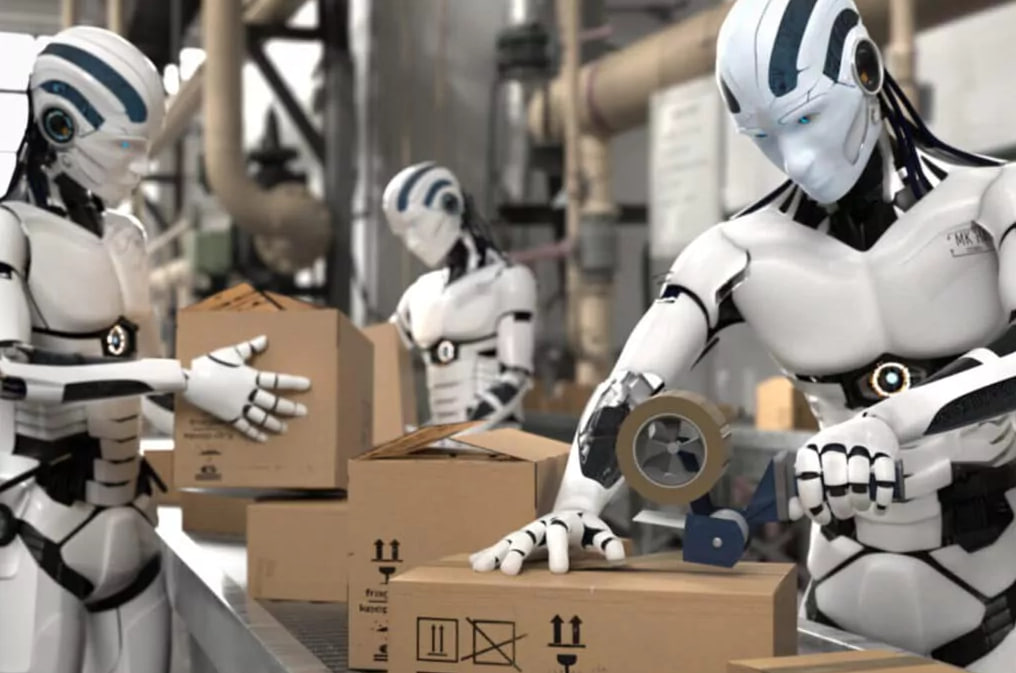In an innovative leap forward for domestic robotics, Chinese technology company Vincross has unveiled a remarkable advancement in home automation: HEXA, a six-legged robot worker designed to serve as an autonomous plant caretaker. This sophisticated device, weighing just 1.75 kg, represents a fascinating intersection of robotics and everyday plant care, offering a glimpse into the future of household automation.
The spider-like robot, equipped with advanced sensors and mobility systems, has captured attention for its unique approach to plant maintenance. Unlike traditional static plant containers, HEXA actively monitors and responds to its plant's needs, carrying potted plants to optimal locations for sunlight exposure and indicating when watering is required through a series of programmed movements.
"What makes HEXA particularly revolutionary is its ability to express 'emotions' through movement, creating an interactive experience between plants, their owners, and the robot itself," explains Tianqi San, one of the project's founding members. "When the plant needs attention, HEXA communicates through distinctive stomping movements, and when conditions are optimal, it performs a 'happy dance' – adding a surprisingly personal touch to plant care automation."
The technical sophistication behind this robot worker extends far beyond its endearing behaviors. Powered by a 2-core ARM Cortex-A9 processor and equipped with a 720p HD camera, HEXA navigates complex indoor environments with remarkable precision. Its six legs, each featuring three servos, provide 18 degrees of freedom, allowing the robot to traverse various surfaces and overcome obstacles while safely transporting its precious botanical cargo.
The robot's autonomous capabilities are particularly impressive in their scope. Using a combination of sensors, including a 3-axis accelerometer and infrared transmitter, HEXA can navigate even in complete darkness. The robot's crown jewel is its ability to independently seek out optimal lighting conditions for its plant passenger, moving between sunny and shaded areas as needed to maintain ideal growing conditions.
Operating on the specialized MIND 1.0 operating system, based on the Linux kernel, HEXA represents a significant advancement in accessible robotics programming. The platform allows for extensive customization through its development tools, based on the Golang programming language, enabling users to expand the robot's capabilities beyond its primary gardening duties.
"The potential applications for HEXA extend far beyond home plant care," notes a robotics expert familiar with the project. "Its sophisticated mobility systems and adaptable programming platform make it a valuable tool for everything from home surveillance to potential applications in space exploration, particularly in Mars missions where its terrain-navigation capabilities could prove invaluable."
The robot's practical features include a 6900 mAh lithium-ion battery providing 45 minutes of active use, wireless charging capabilities, and sophisticated networking functions that allow it to automatically position itself in areas with optimal Wi-Fi signal strength. These technical specifications ensure reliable performance in various home environments.
Perhaps most intriguingly, HEXA has fostered a community of developers and enthusiasts who share custom commands and movement algorithms through an open platform. This collaborative approach to development has led to an expanding repertoire of capabilities, from specialized dances to complex movement patterns, all of which can be downloaded and implemented by other HEXA users.
As the global conversation around automation and domestic robotics continues to evolve, HEXA stands as a compelling example of how robot workers can be integrated into everyday life in ways that are both practical and engaging. Its combination of utility and personality-driven interaction suggests a future where robots not only assist with household tasks but do so in ways that enhance the emotional connection between humans and their environment.
The development of HEXA represents a significant step forward in the field of domestic robotics, demonstrating how specialized robot workers can address specific needs while maintaining an approachable and interactive presence in the home. As technology continues to advance, innovations like HEXA may well become commonplace in households worldwide, helping to care for our plants and perhaps even expanding into other areas of domestic assistance.


















